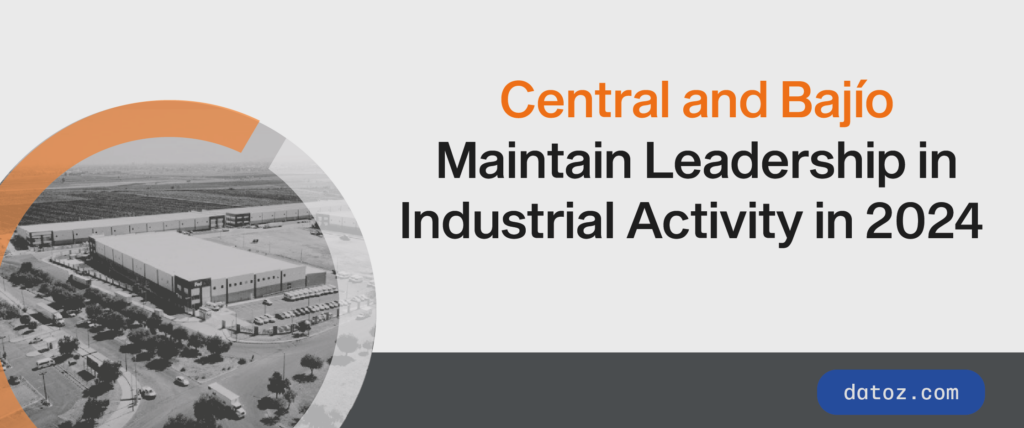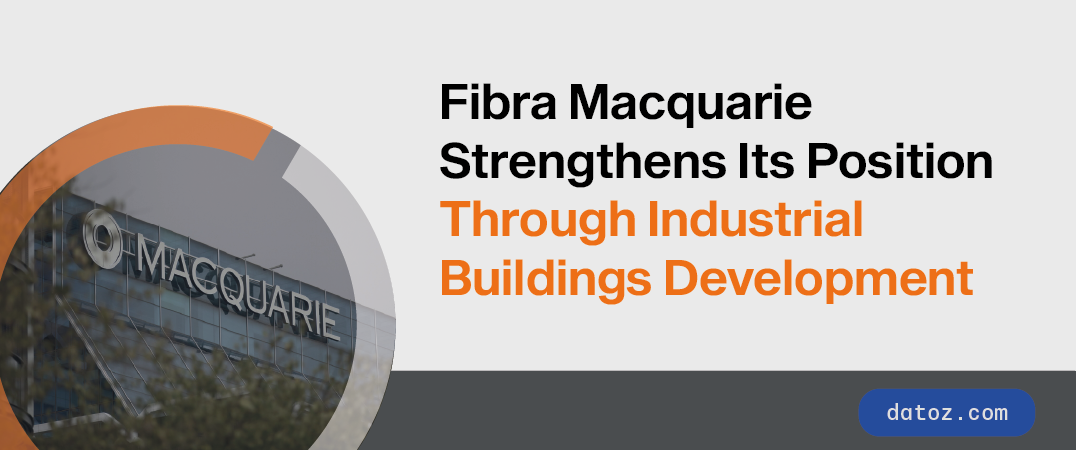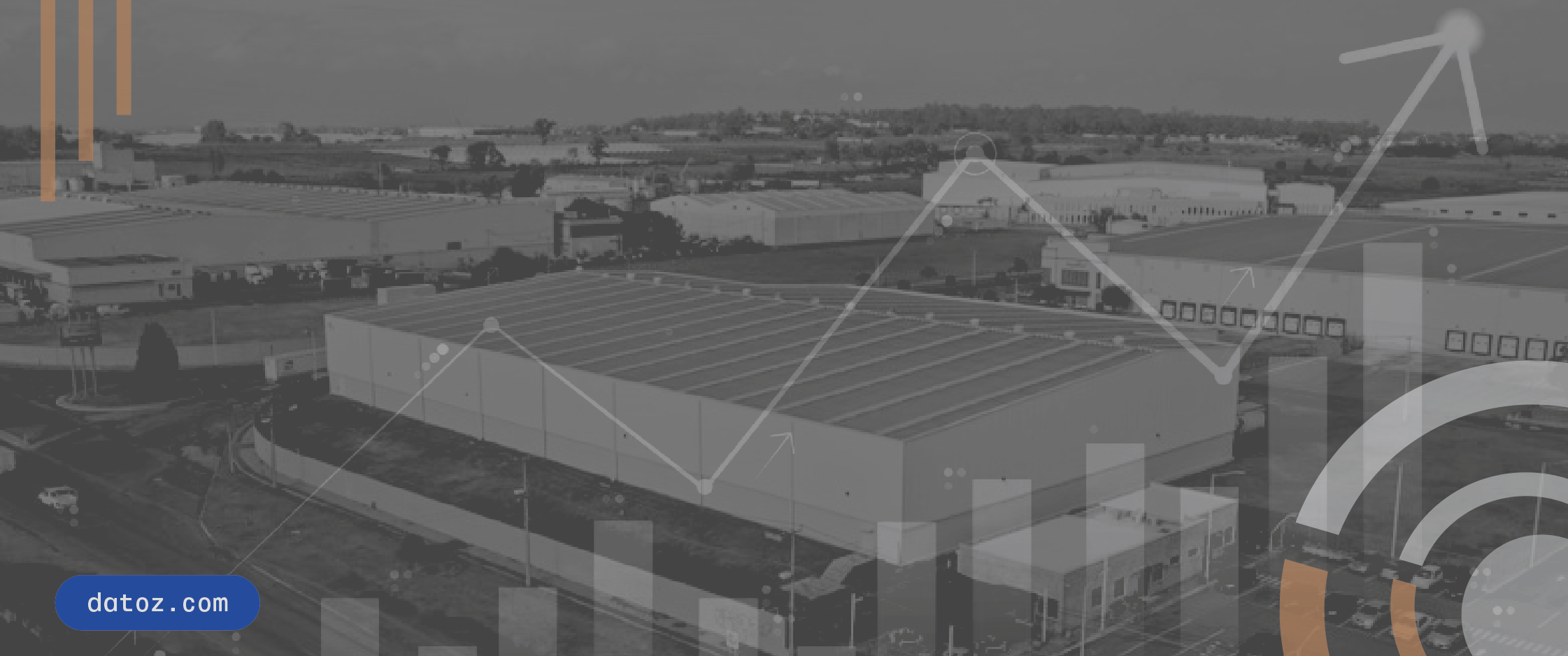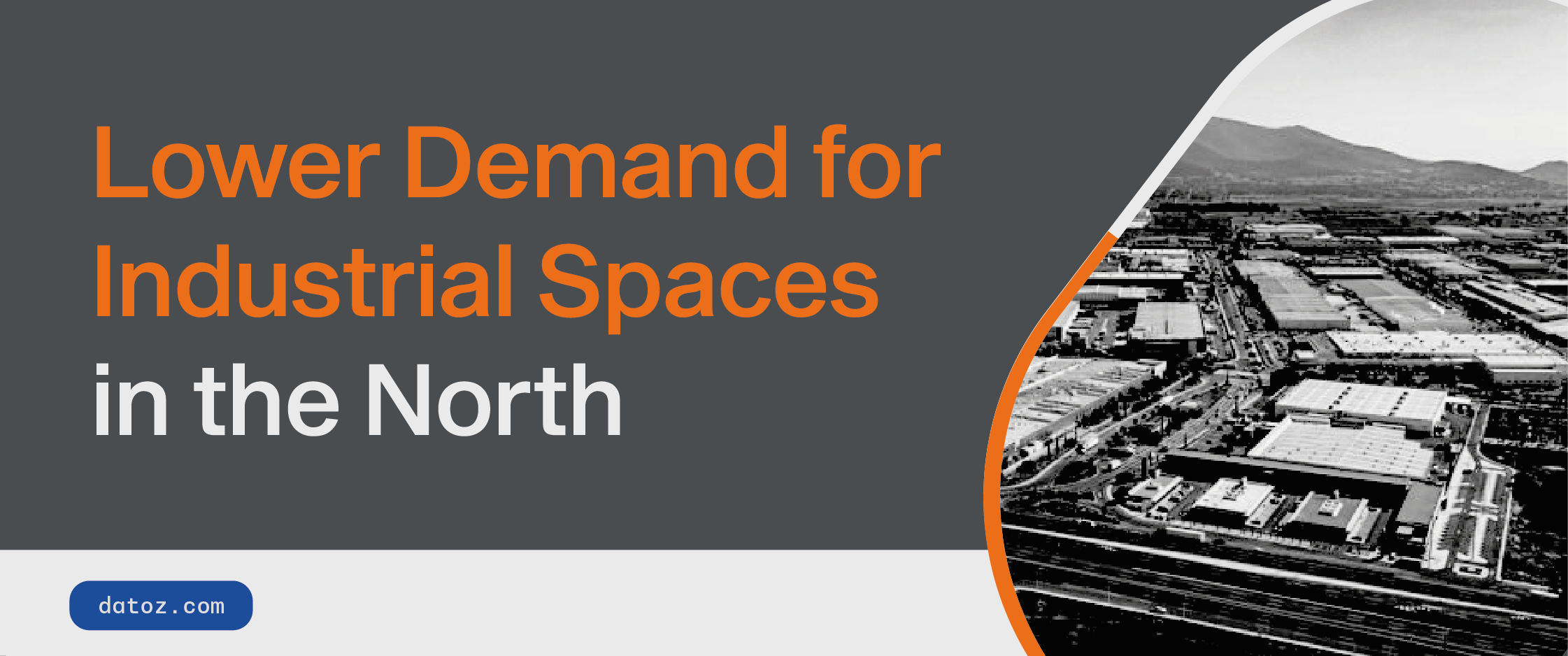The Mexican industrial real estate market closed 2024 with indicators reflecting a stabilization in activity after the atypical levels of gross absorption and construction starts recorded between 2021 and 2023, driven by the dynamics and trends brought about by the COVID-19 pandemic.
Although gross absorption and construction starts declined compared to previous quarters, the annual total showed a sustained decrease in gross absorption, reaching 56.6 million square feet, while construction starts increased, totaling 50.6 million square feet.
Central and Bajío regions saw the highest demand for industrial spaces in 2024. This reflects that the sector remains dynamic thanks to regional diversification and developers’ confidence, despite a year marked by elections in both Mexico and the United States.
Mexico City dominates the central region
Over the past 12 months, Mexico City stood out by concentrating 90% of the gross absorption in the Central region, which also includes Puebla and Hidalgo. However, during the fourth quarter of 2024, this indicator dropped by 64% compared to the previous quarter, reaching 1.1 million square feet absorbed. This decline is attributed to increased investment caution, a common characteristic of election years.
Among the most significant transactions of the quarter were those at CPA Logistics Center in Cuautitlán, where two warehouses totaling nearly 700,000 square feet were occupied by Puma, the sportswear company, and Fram Group.
However, the largest transaction of 2024 was Mercado Libre’s lease of three industrial warehouses totaling over 1 million square feet, two of them located in Cuautitlán and the other in Pachuca, Hidalgo.
Bajío: Stability and Competitive Prices
The Bajío region, consisting of Querétaro, Guadalajara, Guanajuato, Aguascalientes, and San Luis Potosí, closed the year with an inventory of 395 million square feet and an availability rate of 5.58%, marking a 12% decrease compared to the previous quarter. This was due to the strong absorption recorded throughout 2024, making it the most dynamic region in the country.
Querétaro and Guadalajara led absorption activity, accounting for 39% and 34%, respectively, primarily driven by companies in electronics, warehousing, retail, and transportation equipment manufacturing.
The region maintained competitive asking prices, averaging $0.55 per square foot, thanks to the extensive land reserves available in industrial parks.
Challenges for 2025
The industrial sector faces key challenges to maintain its momentum:
Energy Infrastructure: Improving energy distribution, especially in Querétaro, to support industries such as Data Centers.
Tariffs and Foreign Trade: U.S. trade policies, particularly in industries like automotive, could impact industrial activity in the Bajío region.
Security: Ensuring supply chain security is essential for operational efficiency.
Despite these challenges, 2025 begins with positive prospects, supported by projects in early construction stages and the announcement of new investments. A standout example is Mercado Libre, which strengthened its logistics operations with a 6.4-million-square-foot absorption across key real estate markets in 2024 and plans to continue expanding in 2025.
ChatGPT dijo:
More information in Analytics 2.0. If you are not yet a Datoz client, request your demo.







